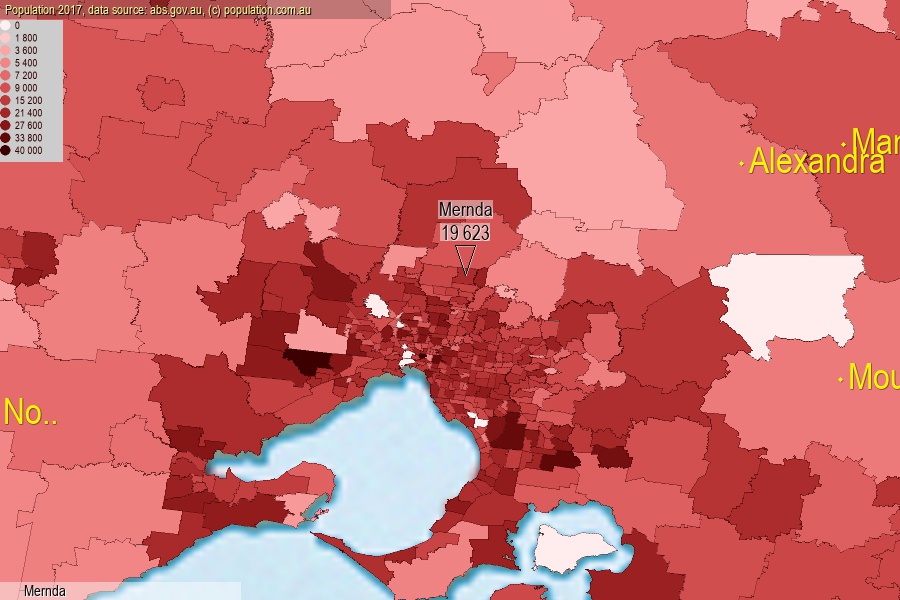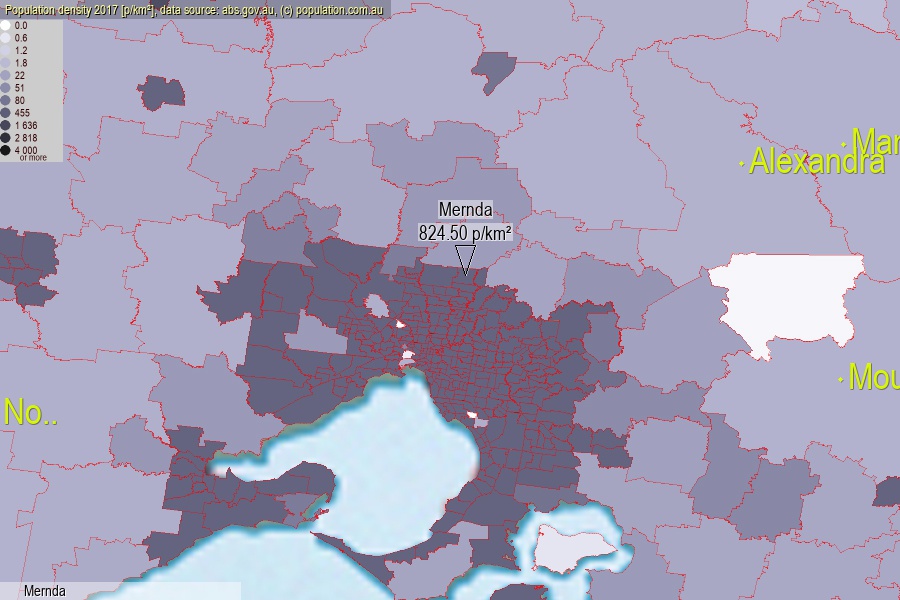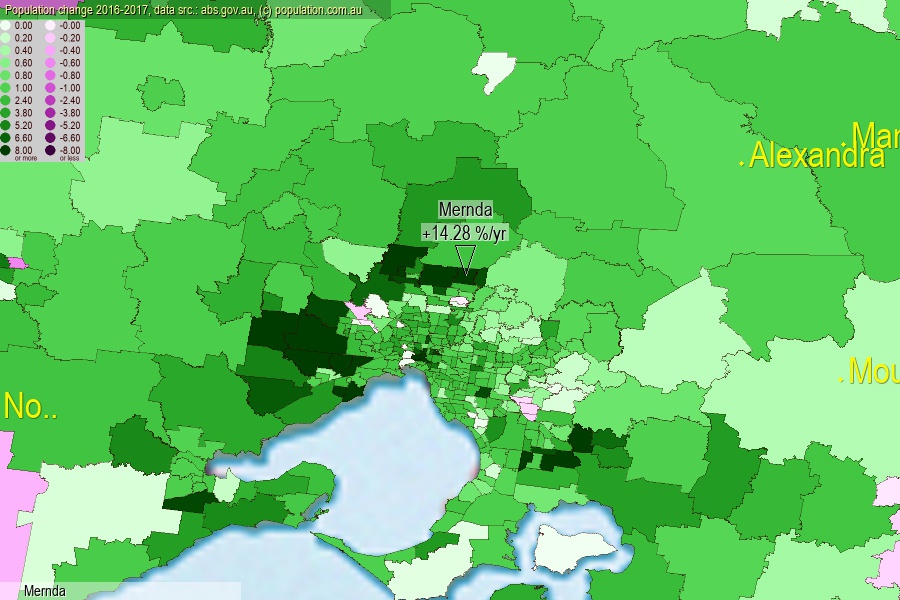 population.com.au
population.com.auLast official estimated population of Mernda (as Statistical Area Level 2) was 19 623 people (on 2017-06-30)[2]. This was 0.08% of total Australian population and 0.305% of VIC population. Area of Mernda is 23.80 km², in this year population density was 824.50 p/km² . If population growth rate would be same as in period 2016-2017 (+14.28%/yr), Mernda population in 2025 would be 57 085. [0]



Click to enlarge. Mernda is located in the center of the images.
Population [people], population density [p./km²] and population change [%/year] [2]
View borders » (new window) [4]
[2001-2002] -6.02 %/Yr.
[2002-2003] -0.90 %/Yr.
[2003-2004] +0.39 %/Yr.
[2004-2005] +0.26 %/Yr.
[2005-2006] +0.51 %/Yr.
[2006-2007] +43.04 %/Yr.
[2007-2008] +87.68 %/Yr.
[2008-2009] +70.98 %/Yr.
[2009-2010] +35.56 %/Yr.
[2010-2011] +31.26 %/Yr.
[2011-2012] +31.54 %/Yr.
[2012-2013] +26.34 %/Yr.
[2013-2014] +18.23 %/Yr.
[2014-2015] +16.98 %/Yr.
[2015-2016] +16.82 %/Yr.
[2016-2017] +14.28 %/Yr.
[0] Calculated with linear interpolation from officially estimated population
[1] Read more about SA2 and Australian Statistical Geography Standard (ASGS) on abs.gov.au
[2] Population data from Australian Bureau of Statistics (Population and density: 2017; change: 2016-2017)
[3] Digital Boundaries: Australian Statistical Geography Standard (ASGS) 2016.
[4] Border coordinates are simplifyed using Ramer-Douglas-Peucker algorithm.